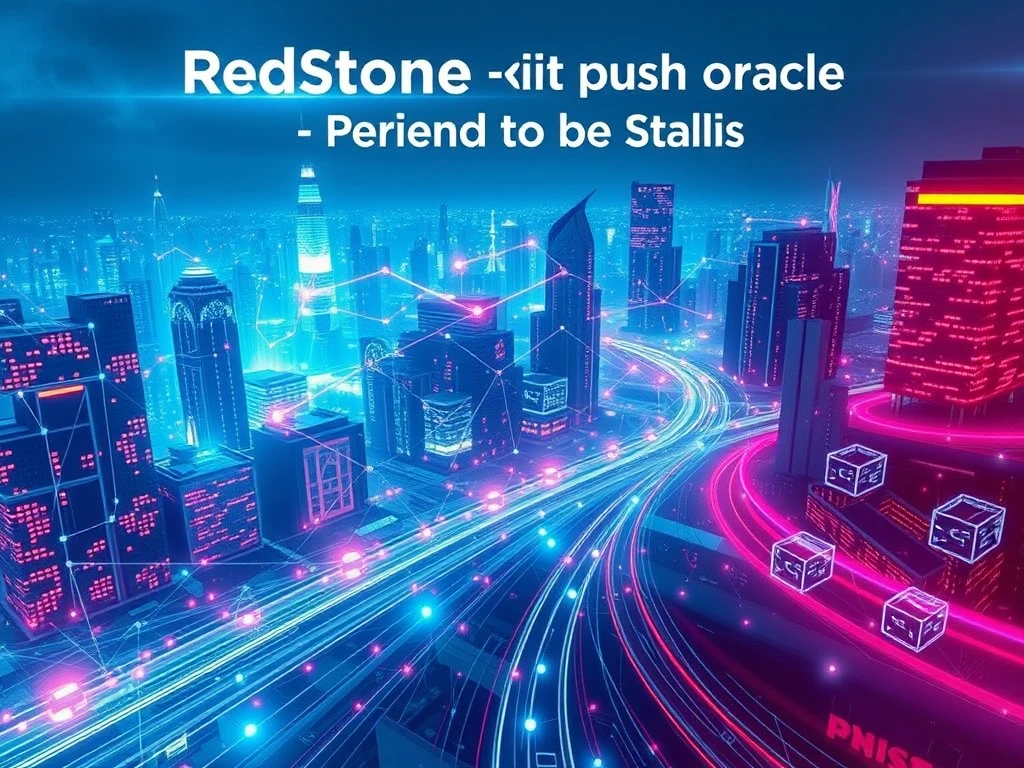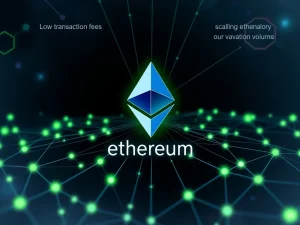Revolutionary RedStone Oracle Slashes Trading Latency on MegaETH

Frustrated with sluggish on-chain trading? Imagine a world where price updates arrive in the blink of an eye, eliminating frustrating delays. RedStone, a leading blockchain oracle provider, is turning this vision into reality with its revolutionary RedStone Oracle, specifically designed to conquer trading latency on MegaETH. This cutting-edge, push-based oracle promises to turbocharge the efficiency of decentralized finance (DeFi) trading, starting with MegaETH, an innovative Ethereum layer-2 network. Let’s dive into how this game-changing technology is poised to reshape the landscape of DeFi.
Unveiling the Power of Push-Based Oracles for Ultra-Fast Trading
What exactly makes RedStone’s new oracle a game-changer? It’s all about speed. Traditional oracles often operate on a ‘pull-based’ model, meaning they only provide data when requested by a smart contract. This request-response cycle inevitably introduces trading latency. RedStone’s innovative approach flips this model on its head. Their push-based oracle proactively delivers price updates, pushing them directly to the blockchain at lightning speed – every 2.4 milliseconds, to be precise! This proactive data delivery eliminates the waiting time associated with pull-based systems, paving the way for significantly faster and more efficient on-chain trading experiences.
Here’s a breakdown of the key benefits of RedStone’s push-based oracle:
- Unmatched Speed: Price updates every 2.4 milliseconds dramatically reduce trading latency, enabling near real-time trading capabilities.
- Enhanced Efficiency: Faster price feeds translate to quicker transaction execution, improved arbitrage opportunities, and a smoother user experience for DeFi traders.
- Optimized for MegaETH: Initially launched on MegaETH, this oracle is specifically tailored to leverage the network’s capabilities and address its unique needs.
- Future Expansion: While starting with MegaETH, RedStone plans to extend this technology to other blockchains, potentially benefiting a wider range of DeFi ecosystems.
How Does the RedStone Oracle Minimize Trading Latency?
RedStone’s secret weapon in the fight against trading latency lies in its strategic ‘co-location’ approach. Instead of relying on external servers that can introduce delays due to geographical distance, RedStone deploys its oracle nodes directly on the MegaETH chain. This ‘co-location’ minimizes the physical distance data needs to travel, significantly reducing transmission times and, consequently, trading latency.
Furthermore, RedStone sources its price data from centralized exchanges (CEXs), known for their high-speed data feeds. By tapping into these robust sources and delivering the data directly through co-located nodes, RedStone creates a streamlined and incredibly fast data pipeline. Looking ahead, RedStone intends to further enhance its data sources by incorporating feeds from decentralized exchanges (DEXs), offering an even more comprehensive and resilient price data ecosystem.
The Booming Oracle Market and DeFi’s Insatiable Need for Speed
The rise of DeFi has ignited fierce competition and innovation within the oracle space. As DeFi’s Total Value Locked (TVL) continues its impressive growth trajectory – nearing $88 billion as of April 8th and surging 116% in 2024 alone – the demand for reliable and, crucially, fast oracles has never been higher. RedStone Oracle is stepping into this dynamic market with a solution specifically engineered to address one of DeFi’s most pressing challenges: trading latency.
Currently, the oracle market is dominated by established players like Chainlink and Pyth Network. Pyth Network, with its pull-based model optimized for high-volume activities, even surpassed Chainlink in 30-day trading volume in October 2024, highlighting the intense competition and the constant push for innovation in data delivery models. The total market capitalization for oracle tokens stands at a substantial $10.2 billion, underscoring the critical role oracles play in the functioning of the entire cryptocurrency ecosystem.
The Future of DeFi Trading: Faster, More Efficient, and Less Latency
RedStone’s introduction of a push-based oracle on MegaETH marks a significant stride towards minimizing trading latency and unlocking the full potential of DeFi. By delivering price updates at an astonishing 2.4-millisecond interval, RedStone is not just improving speed; it’s enhancing the entire DeFi trading experience. As DeFi continues to evolve and attract greater participation, innovations like RedStone’s oracle will be instrumental in building a more efficient, responsive, and ultimately, more robust decentralized financial system.
Will this push-based model become the new standard for oracles? Only time will tell. However, RedStone’s bold move to tackle trading latency head-on demonstrates a clear understanding of the evolving needs of the DeFi space and a commitment to pushing the boundaries of what’s possible with blockchain technology. Keep an eye on RedStone and MegaETH – they are shaping the future of fast and efficient DeFi trading.










